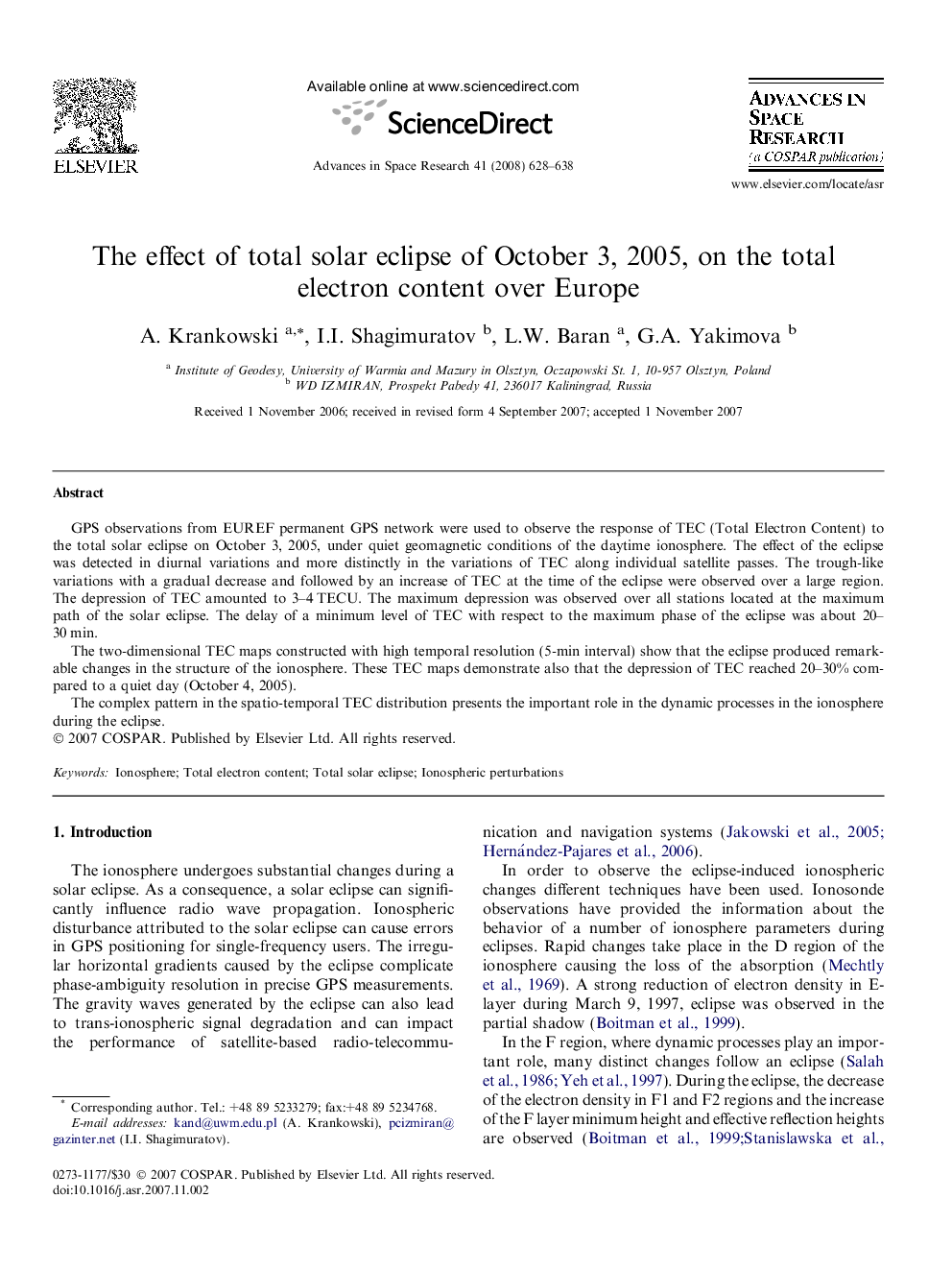| Article ID | Journal | Published Year | Pages | File Type |
|---|---|---|---|---|
| 1768764 | Advances in Space Research | 2008 | 11 Pages |
GPS observations from EUREF permanent GPS network were used to observe the response of TEC (Total Electron Content) to the total solar eclipse on October 3, 2005, under quiet geomagnetic conditions of the daytime ionosphere. The effect of the eclipse was detected in diurnal variations and more distinctly in the variations of TEC along individual satellite passes. The trough-like variations with a gradual decrease and followed by an increase of TEC at the time of the eclipse were observed over a large region. The depression of TEC amounted to 3–4 TECU. The maximum depression was observed over all stations located at the maximum path of the solar eclipse. The delay of a minimum level of TEC with respect to the maximum phase of the eclipse was about 20–30 min.The two-dimensional TEC maps constructed with high temporal resolution (5-min interval) show that the eclipse produced remarkable changes in the structure of the ionosphere. These TEC maps demonstrate also that the depression of TEC reached 20–30% compared to a quiet day (October 4, 2005).The complex pattern in the spatio-temporal TEC distribution presents the important role in the dynamic processes in the ionosphere during the eclipse.
